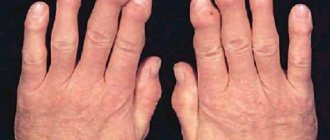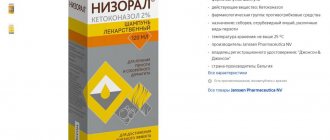Is an allergy to cow's milk treated in a child, what to give to a bottle-fed allergic baby and what should a mother do if her breast milk causes an allergic reaction in the child - these and other popular questions from mothers are answered by Doctor of Medical Sciences, Professor of the Department of Pediatrics with a course Polyclinic Pediatrics named after. Academician G.N. Speransky Federal State Budgetary Educational Institution of Further Professional Education RMANPO of the Ministry of Health of Russia Irina Nikolaevna Kholodova.
— Irina Nikolaevna, how can you understand that a newborn or a 1.5-2 year old child has an allergy?
— I would like to draw the attention of parents to the fact that if there are people in the family who suffer from allergies, then, of course, the likelihood of allergies in the child will be quite high. For example, if only the mother suffers from it and all allergy sufferers are on the mother’s side, then the probability of an allergy is 40-50%, and if on both the mother’s and father’s side, then it is already 80%. That is, allergies are inherited
and in a child it can manifest itself from the first days of life. In young children, skin and gastrointestinal forms of allergies are most common.
Skin allergy
In young children, it is the cutaneous form that predominates (previously it was called exudative-catarrhal diathesis, now it is called atopic dermatitis) - an allergic rash appears on the child’s body. This can be a dry or wet rash, most often with itching.
Gastrointestinal form of allergy
This form is more difficult to diagnose, and it can be very difficult to understand that it is an allergy. Such children may experience severe colic from the first days of life - food is poorly digested, under-oxidized products are formed that irritate the gastrointestinal mucosa and can cause inflammation. In addition, due to impaired fermentation of food, a large amount of gases is formed. Gases stretch the intestines and put pressure on nerves and blood vessels. All this causes spasm and pain.
Subsequently, changes in the character of the stool may appear - there are constipation, but most often diarrhea occurs. Moreover, stool is usually several times a day, and it can be irritating, with a lot of mucus and even streaks of blood. The child begins to eat poorly, there is poor weight gain, and subsequently there may be a slowdown in growth. In such a situation, it is necessary to hospitalize the child to determine the cause - it can be not only an allergy, but also other diseases.
Is milk not for everyone?
The main task of the immune system is to recognize “self” and “foreign” cells. It reacts mainly to substances of protein nature, forming either a “Friend” (so-called immunological tolerance) or “Enemy” (antigen) response. When the response is “Enemy,” specific substances (antibodies) are produced that are aimed at fighting it. But, as with any system, there are failures.
Allergy (atopy) is an example of one such failure, when even friends are blacklisted. The child’s immune system begins to react to BCM inappropriately and excessively, blacklisting it. Beneficial protein turns into an allergen. This reaction is called "hypersensitivity."
The reasons for the occurrence of such “problems” are not reliably known to anyone. Scientists only build hypotheses, accumulate and systematize knowledge. All experts agree that genetic predisposition plays an important role. The only way to break the vicious circle of allergies and help a person is to exclude the causally significant allergen from the diet (environment) of this person.
This is called elimination (and elimination measures).
Milk substitutes in the diet
In recent years, soybean has been considered one of the substitutes for cow's milk, mainly soy milk and soy-based products.
It includes, among others, vitamin E and B, calcium, protein, magnesium, iron, phosphorus and lecithin. However, soy is not always safe. Soy products are not recommended for children under 6 months of age. Moreover, in severe allergies, the intestinal mucosa may be receptive to soy protein, resulting in soy allergy. You can also use coconut, rice or nut milk. Excluding cow's milk, you need to take care of the right amount of calcium in your diet. Its sources: eggs, fish (which contain bones, for example, sardines, sprats), as well as plant products: bread, flour, coarse cereals, dried legume seeds, vegetables (for example, spinach, chard, cabbage), nuts, cocoa, figs and dried apricots. Also allowed: meat, cereals, bread and eggs. Of course, fruits are also highly recommended, but you should be careful with citrus fruits. The menu can be based on these products; you can additionally maintain calcium levels, for example, using tablets.
Forbidden sweets, that is, sweets containing milk, can be replaced with dairy-free analogues, for example, milk chocolate can be replaced with dark chocolate or dried fruit candies, and a purchased cake can be prepared independently by baking it without adding milk.
Atopic diseases. How to suspect them?
Often people don’t even know about the diagnoses listed above because they don’t see a doctor.
The following symptoms should alert you:
- seasonal nasal congestion or runny nose with copious mucus production
- occasional lacrimation
- bouts of coughing and sneezing
- prolonged dry cough
- bouts of difficulty breathing
- wheezing
- rashes, redness and itching of the skin
- skin prone to dryness and flaking (periods or after contact with something)
- redness and/or other skin reaction to sun or cold exposure
- skin irritation after contact with something
- reactions to insect bites
- reactions to drugs
If the above symptoms occur, then there is a high probability of atopy. In this case, it is better to seek advice from a specialist. If you have allergies, be sure to tell your pediatrician about it and monitor your child’s diet.
Causes
An allergy can begin after drinking milk, since the proteins contained in milk are considered foreign to a young body, and therefore potentially hazardous to health and capable of causing an immune response.
Although all milk proteins can be considered possible allergens, caseins and some whey proteins (particularly β-lactoglobulin, serum albumin and immunoglobulins) are considered responsible for sensitization. Caseins, which make up about 80% of milk proteins, are quite resistant to the heat treatment that milk undergoes: as a result, they do not denature (break down) and can maintain their ability to bind antibodies.
A milk-based diet is essential for the newborn body: if mother's milk is not available and there is an allergy to cow's milk, then it is obvious that it is necessary to find the right alternative to milk, which is absolutely necessary to ensure the health of the child.
Is it possible to prevent the development of ABCM?
Yes.
During pregnancy, the process of “friend/foe” recognition begins. The future mother’s nutrition plays a significant role in this. Products containing choline, methionine, zinc, folic acid, vitamins B6 and B12 can regulate gene function and contribute to the formation of tolerance (body resistance) to CMP.
During breastfeeding, you can limit the consumption of dairy products and other obligate allergens. This will reduce the burden on the child’s body and will also contribute to the formation of an adequate response of the immune system to BCM.
Obligate allergens are foods that often cause allergic reactions: eggs, fish, seafood, legumes: peas, beans, soy, peanuts; nuts, honey, strawberries, pomegranate, kiwi, melon, black currant, mushrooms.
Enterosgel and treatment of protein allergies
Enterosgel sorbent is indispensable for the treatment of food allergies in adults and children. The drug effectively absorbs and removes allergens from the body, eliminates unpleasant allergy symptoms and helps restore intestinal microflora.
Doctors advise allergy sufferers to use Enterosgel for preventive purposes. For example, in case of possible dietary violations while visiting, on business trips, or having to eat outside the home.
If supplementary feeding is needed?
In the first three months, all children, regardless of the degree of risk of developing CM, are recommended to use only mixtures with specially prepared protein. Their degree of allergenicity is significantly reduced, which is why they are called hypoallergenic. The NutrilakPremium Hypoallergenic mixture is additionally enriched with probiotics and food substrate for their growth and development (prebiotics). The NutrilakPremium Hypoallergenic fat component in combination with lutein best provides all the needs for the development of the child’s brain, vision and motor skills.
How does an allergy to BCM manifest in a baby?
Symptoms of ABCM can be very different.
With skin lesions:
- the appearance of dry skin, sometimes in the form of plaques
- redness of certain areas of the skin (around the mouth, arms and legs, cheeks, chest and abdomen)
- the appearance of weeping spots and crusts with severe itching
- long lasting diaper rash
Involving the gastrointestinal tract:
- private regurgitation
- colic
- constipation
- diarrhea
- mucus in stool
- blood-streaked stool
- poor appetite and slow weight gain
The mucous membranes of the eyes, nose and respiratory tract may be involved with the following symptoms:
- lacrimation
- prolonged runny nose
- distant wheezes
- paroxysmal cough
All this can also affect the baby’s behavior in the form of:
- irritability
- sleep disorder
- bouts of crying and anxiety
It is important!
If symptoms persist after eliminating the causative allergen from the diet, it may not be a food allergy.
Contact your pediatrician immediately. In this case, a nursing woman needs to return to a balanced diet that includes all foods acceptable in the diet of nursing women (to prevent nutritional deficiencies in both her and the child).
If the baby is on mixed or artificial feeding, then together with the pediatrician it is necessary to decide on the correct selection of nutrition for him.
If the baby is already familiar with complementary feeding products, then together with the doctor, review the menu again. Make changes if necessary. Products containing BCM should be excluded. Keeping a food diary for mother and baby will greatly facilitate the process of finding the allergen and taking measures to eliminate it.
How to confirm the diagnosis of ABCM?
There are not many tests in a doctor's arsenal for this, and there are no gold standards. There is no analysis that can confirm the diagnosis with 100% certainty.
The immunological tests performed can be divided into:
- nonspecific, confirming the allergic nature of inflammation
- specific, indicating the degree of significance of the influence of a particular allergen
Difficulties in diagnosing ACM It is extremely rare that only one allergen (CAM) is the cause, the trigger that triggers inflammation
- Most often these are several allergens at once (polyvalent allergy)
- There is cross-reaction between different groups of products
- If the child is breastfed, immunological tests are difficult to interpret (due to the presence of maternal antibodies in his blood)
Ways to select nutrition for ABCM
It all depends on the severity of the allergic process, existing symptoms, the age of the child and the type of feeding.
Breastfed
It is enough to organize the mother's nutrition.
With mixed feeding
If supplementary feeding is necessary, experts recommend using a mixture with split protein hydrolyzate. Of these, you can consider the Nutrilak Premium Hypoallergenic mixture.
Compared to whole molecules of cow's milk proteins, the allergenicity of its split protein is reduced by 100,000 times. Nutrilak Premium Hypoallergenic is suitable for the prevention of allergies in children at risk and the treatment of mild skin manifestations.
Lactose intolerance
Lactose intolerance is a condition in which the consumption of milk and dairy products causes a non-allergic reaction that manifests itself in gastrointestinal complaints such as bloating, cramping pain and occasional diarrhea. The reason is the absence or reduction in the number of enzymes responsible for digesting lactose, i.e. sugar contained in milk and its derivatives, which physiologically must be broken down into two simple units or monosaccharides. These enzymes, present in the brush border of intestinal cells and called lactases, are responsible for breaking down lactose and breaking it down into its two component sugars: galactose and glucose.
Galactose is necessary for the formation of nerve structures in children, while glucose is the body's primary energy substrate. In some rare cases, lactose intolerance may be caused not so much by a deficiency of lactase, but by a deficiency of proteolytic enzymes necessary for the digestion of milk proteins.
It is important!
Nutrilak Premium Hypoallergenic contains lactobacilli L.rhamnosus LGG® - this is the most effective and safe probiotic for children from birth, used for the treatment and prevention of atopic dermatitis and eczema.
With artificial feeding
If the baby has pronounced skin manifestations, there are crusts and areas with weeping, or there is persistent heavy regurgitation, streaks of blood in the stool, then only deep hydrolysates (for example, Nutrilak PEPTIDE MCT) or amino acid mixtures can be used from mixtures.
Children over 6 months have a wider choice of food: there is more possibility of using complementary foods and soy mixtures (for example, NutrilakPremium Soya).
Is it possible to outgrow ABCM?
No!
If tolerance has not been formed and hypersensitivity to CMP remains, then the allergic inflammatory process occurs in the background. It may not be as pronounced, but it continues! Gradually, the foundation is laid for the development of chronic pathological diseases, turning into a time bomb.
What else is useful to know?
In the process of forming a reaction to an allergen, not only the response of the immune system is important, but also the background against which it unfolds.
It is known that products such as chocolate, cheese, citrus fruits, vinegar, nuts, marinades, etc. are a source of special substances (histamine liberators). They help maintain allergic inflammation by adding fuel to this fire. Limiting their intake or completely eliminating them will reduce the manifestations of atopy and help alleviate the child’s condition.
The smallest friends are microorganisms. Most of them live in the large intestine. They are our great helpers. Their contribution to curbing allergic reactions and forming the correct response to food is difficult to overestimate. More and more studies are confirming this. And if your own intestinal inhabitants can’t cope with this, then trusted friends – probiotics – can come to the rescue. All over the world, only two microorganisms have the largest evidence base on the antiallergic effect - LGG and BB-12 from Chr. Hansen. One of them even has its own website (https://www.lgg.com/).
Dysbacteriosis
Intestinal dysbiosis does not act as an independent form of the disease. But this clinical concept exists and is currently considered from the standpoint of a syndrome that accompanies many conditions and diseases.
Intestinal dysbiosis is a clinical and laboratory syndrome that occurs in a number of diseases and clinical situations. It is characterized by changes in the qualitative and/or quantitative composition of the microbiota, metabolic and other disorders, accompanied in some people by clinical symptoms of intestinal damage.
There is a concept of “transient dysbiosis” in a newborn. It provides for cases when in the first days of life the child has not yet acquired a sufficient number of intestinal microorganisms in their normal composition. After all, some bacteria are colonized only after two weeks or more, which is reflected in the baby’s stool. In the first 2-3 days after birth, the stool is thick and green, with an unpleasant odor. This is meconium, which contains particles of epidermis, amniotic fluid that the baby swallowed while in the womb. Manifestations of such changes in the nature of stool are transient dysbiosis, that is, a normal phenomenon in the first weeks after birth. Later this will be a pathological process that will bring discomfort to the child.
Symptoms of dysbiosis are constantly associated with the basic functions of intestinal microorganisms. And, of course, the main function is the regulation of intestinal motility. Under the influence of microflora, a large number of prostaglandins are synthesized - bradykinins, which affect the contraction of the intestinal wall. Therefore, when this function is disrupted, children first experience abdominal problems in the form of cramps. This leads to the child becoming restless, whiny, and inactive.








